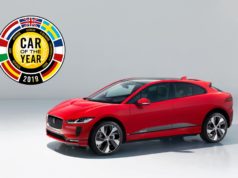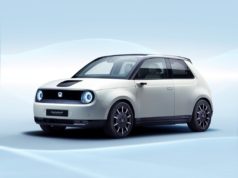Few observers of the evolution of the automotive scene have had a better vantage point than Bill Russo. With more than 30 years in the industry – half of that time as an auto executive with experience in China and Asia – Russo nowadays heads up the Automotive practice for Gao Feng Greater China, working as the company’s senior representative in Shanghai. Nissan spoke with Bill recently for their Q&A series to get his take on the impact of autonomous driving and the emergence of smart vehicles on the roads.
Q: How will the driving experience change in the Autonomous Age?
A: The potential is there for a complete redefinition of what we mean by transportation, both in terms of comfort and convenience. With the advent of autonomous driving, we’re talking about a transition from a device where we really had to focus on the road – because we were the brains of the car – to where we can focus on other things. That is time given back to us that will allow us to do other things because we won’t have to monitor what’s going on with the vehicle itself.
Q: Thinking back to how the public reacted to other major technology shifts in transportation, such as trains or commercial aviation – To what extent were these shifts driven by the user-convenience factor?
A: When you look back in history, the greatest inventions by humans – the wheel, the bicycle, the steam ship, the train, the airplane – they all exist to give us the ability to travel over increasingly greater distances. Over time, each invention added more convenience and more new features to make the experience of mobility much more enjoyable and less painless. And as each of these solutions became commercially viable and affordable, they did so by offering users a benefit versus whatever preceding form of transportation they had favored up to that point – a benefit for which they were willing to pay.
Q: How important was the pace of technological progress?
A: It’s not about creating a technology for the sake of having the technology; it’s about providing a more comfortable and convenient way for people to travel the distances that we travel each day. They have to provide a tangible benefit for people to be willing to pay and use the new mode of transport. For example, trains reduced the amount of time that it took to travel across the country from months to days. The commercial airplane reduces that same time to a matter of hours. We can circle the world in a jet in little more than a day. Not so long ago, in historical terms, that journey took people years in a boat. And they may not even have lived to tell the story.
Q: Where do cars fit in the historical narrative?
A: The car became a primary means for the average person to satisfy their daily needs for mobility. We’ve designed city and transportation networks that were basically for vehicular transportation. In the 21st century, we’re seeing a phenomenon – particularly in emerging markets in Asia – where there are now very densely populated urban centers. That urbanized context is not really well suited for the car that we know today. Today’s cars are really for highway transportation. So in an increasingly urbanized world, we’re going to experience the next evolution of convenience and mobility which I think will be an autonomous mobility solution.
Q: Will perceptions of autonomous driving vary by country due to local conditions?
A: Absolutely. First of all, comfort and convenience are solutions to mobility “pain points” and the degree to which people experience pain points varies greatly based upon where they live. Mobility pain is much higher in cities with dense population, like New York or Paris or Delhi – and virtually all major cities in China. A city like Beijing experiences gridlock several times a day. And the driving experience in a highly urbanized country like China can be horrific. You can spend an hour going less than 10 miles in a car. So the joy of being behind the wheel and driving is not really there.
It’s a big difference from the driving experience of getting out on the open highway. New forms of electric and autonomous mobility will be a common solution to address the mobility pain points in many places.
Q: What does it mean when we have autonomous vehicles on the road that are designed from a user-centric perspective as opposed to the current driver-centric mindset?
A: With autonomous cars, we will be able to transform travel time into productive time – especially for longer distance commutes. There’s the potential to participate in the digital ecosystem, offering users in autonomous cars access to services and content that they can consume while mobile. Convenience services could include infotainment or watching news or doing emails and conference calls. The car thus becomes a connected rolling space that transports us to places where we live, work, and play.
Q: As autonomous technology removes the drudgery of mundane tasks associated with driving, how does that reshape how we relate to vehicles?
A: Vehicles will have the intelligence to diagnose the situations that they’re in. And then make the more complex decisions that human beings today make. That not only reduces the pain points of driving. It also is going to make the overall experience more convenient, safer, and enjoyable for the occupants.
With autonomous driving, we’re arriving at a point where we can define a new paradigm. It refocuses how the passenger conducts and uses their transportation time. Observing what happens outside of the car, for instance, moves from being a requirement to a choice. You don’t have to look outside the window any longer. You can – if that’s what you want to do. But you really don’t have to concern yourself with what you see outside. It’s like being an airline passenger looking out the window. You can look out the window but do you really need to?
Think about the “cockpit” space – its purpose is giving drivers information, which they need to make decisions. You can repurpose all of that from a driver-passenger perspective to a connected user perspective. You will be able to provide people display space that allows them a more productive use of information. The purpose of the car doesn’t change – it’s still a transportation system. But this new concept of how to offer a convenience-oriented autonomous vehicle to the occupant(s) is different.
































